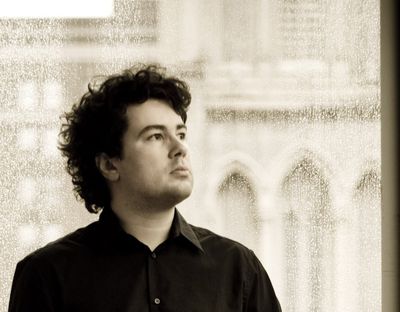Symphony offers ‘Sleeping Beauty’
Tchaikovsky suite part of all-Russian concert

Two weeks ago the Spokane Symphony gave a brilliant and virtuoistic performance of Igor Stravinsky’s landmark music from “Petrushka.” This weekend, Stravinsky’s lighter, neo-classic gem Divertimento from the ballet “The Fairy’s Kiss” will provide the audience with another facet of Stravinsky’s fertile mind.
It’s part of an all-Russian lineup, featuring guest conductor Danail Rachev. Joining the Stravinsky on the bill are: Overture to “Russlan and Ludmilla,” by Mikhail Glinka; “The Sleeping Beauty” Suite, by Pyotr Ilyich Tchaikovsky; and Symphony No. 9 in E-flat Major, by Dmitri Shostakovich.
Borrowing themes from more than a dozen songs and chamber music pieces by Tchaikovsky, Stravinsky created a magical score for “The Fairy’s Kiss.” This work is representative of his style during the 1920s yet remains faithful to Tchaikovsky’s music.
“The Sleeping Beauty” Suite by Tchaikovsky will receive its first performance by the Spokane Symphony. Premiered in 1890, this ballet became the ideal for the Russian imperial style. While the story may be very familiar to us, especially given the Walt Disney animated feature, it was a secondary concern for Tchaikovsky. He once remarked: “Going to the ballet for the plot is like going to the opera for recitatives.”
Cast in five movements, the music truly dances and charms the listener.
The famous “Sleeping Beauty Waltz” is the suite’s finale.
Mikhail Glinka founded the nationalist movement for Russian classical music. The opera “Russlan and Ludmilla,” based on a versified fairy tale by Alexander Pushkin, was completed in 1842. The scintillating and rocketlike overture is still very popular today with audiences throughout the world.
Dmitri Shostakovich was perhaps one of the most misunderstood and maligned composers in music history. His back and forth struggle with the Soviet authorities throughout his entire life has been extensively documented and discussed.
When the war ended in 1945, the Soviet people and government were looking to composers, especially Shostakovich, to compose symphonic/choral works that honored the heroes of the Soviet Union. In his Seventh Symphony (“Leningrad”) and the dark Eighth Symphony, Shostakovich plumbed the depths of the sufferings of mankind during war.
The Ninth Symphony is the polar opposite to its two predecessors. Its five movements are truly classical in nature; with arch-like form and chamber music scoring, this “Classical Symphony” of Shostakovich is a gem.
When the symphony was completed Shostakovich remarked: “Musicians will love to play it and the critics will blast it.”
It is a jewel mine for wind players with brilliant solo passages throughout. The first and last movements are wonderful parodies of military music. This, among other reasons, is why the Soviet regime denounced Shostakovich – yet again.
The last three movements are performed without pause. The haunting bassoon soliloquy in the fourth movement leads right into the festive finale where we hear the joyous musical ghost of Rossini.
A native of Bulgaria, Rachlev is music director of the Eugene Symphony and assistant conductor of the Philadelphia Orchestra.
From 2005 to 2008 he was assistant conductor of the Dallas Symphony, where he earned raves such as this one from the Dallas Morning News:
“One of the Dallas Symphony Orchestra’s best concerts of the past year … start to finish, assistant conductor Danail Rachev got the music unfailingly right, and viscerally compelling.”